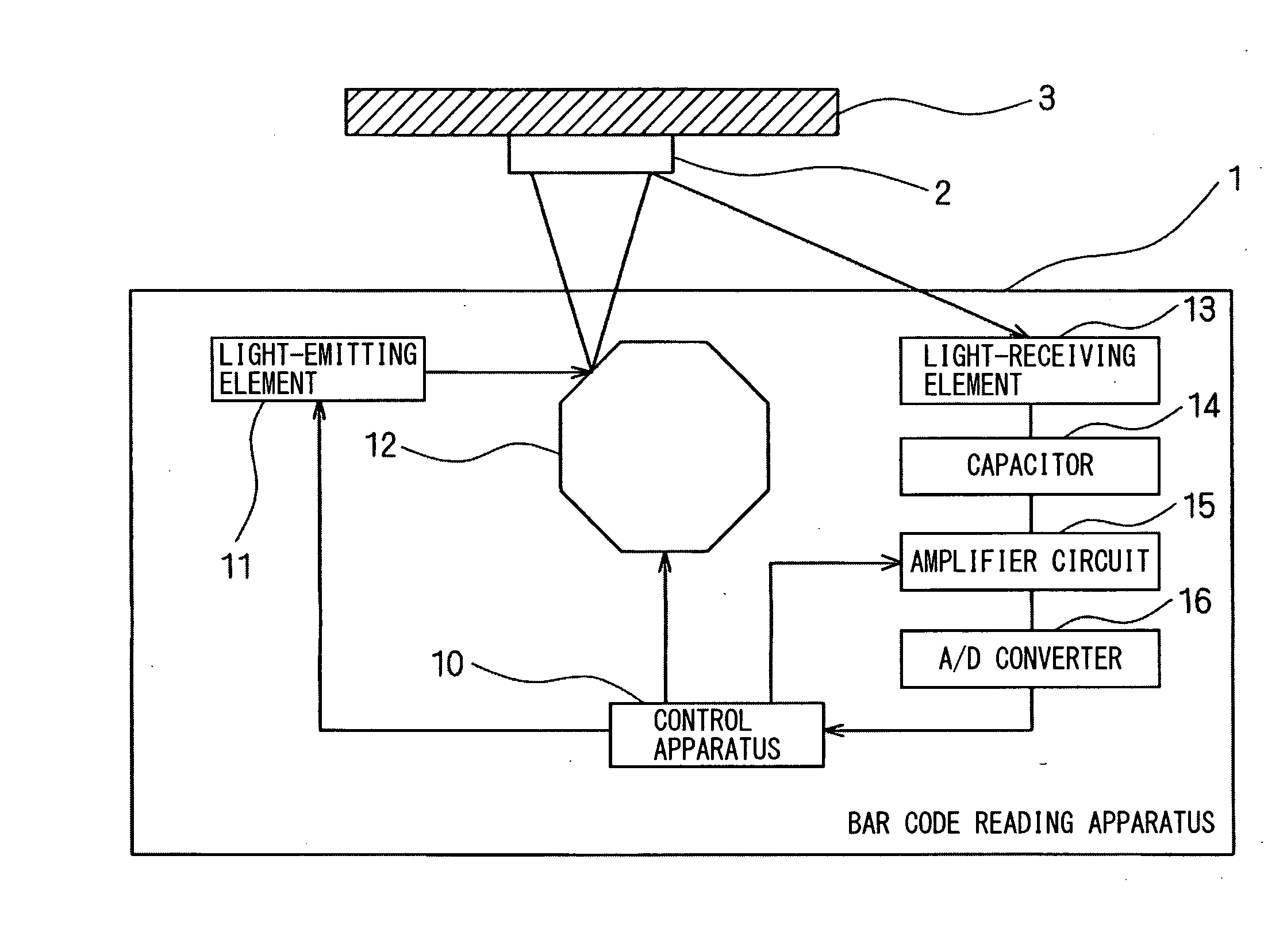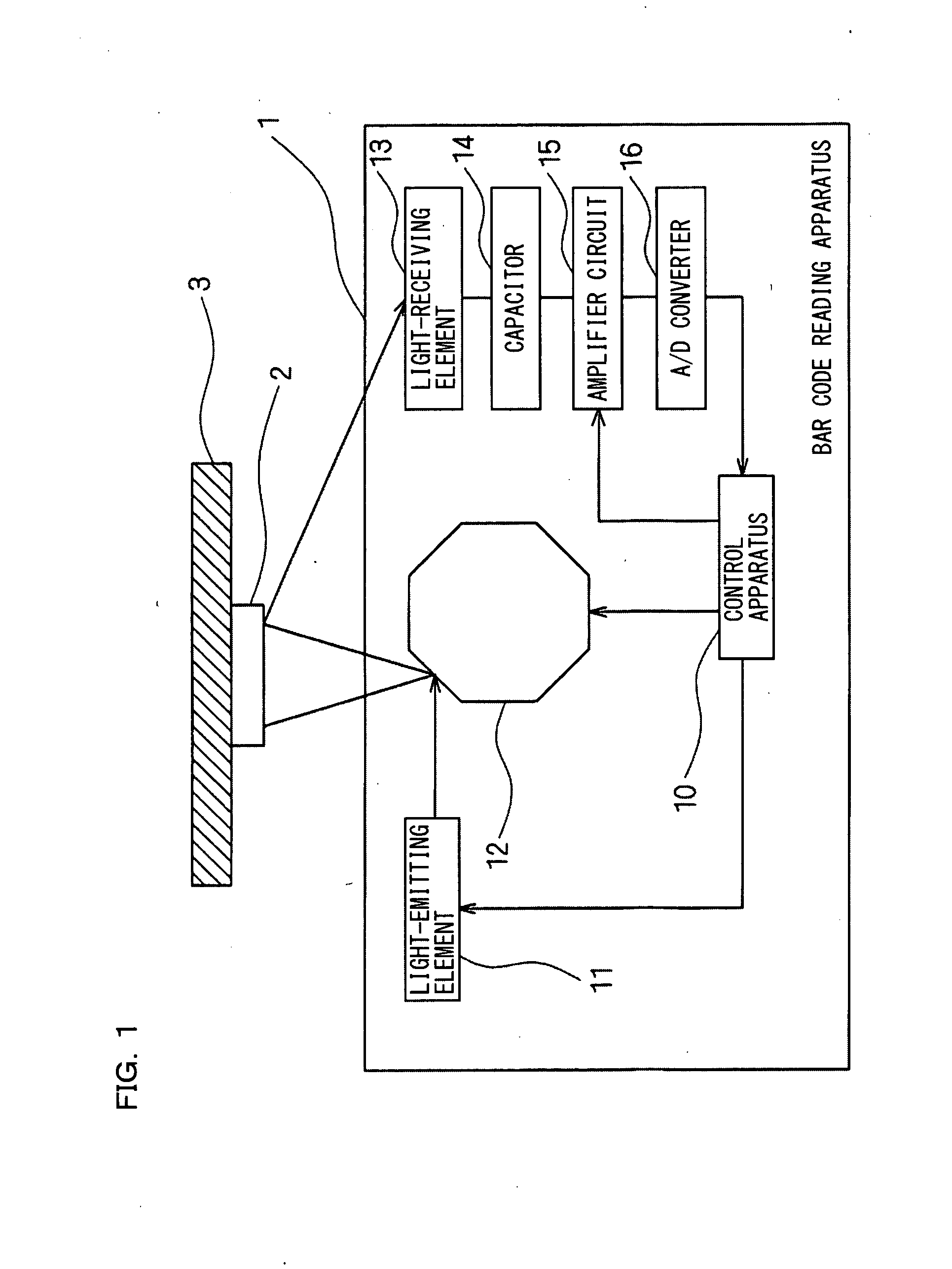Bar Code Reading Apparatus and Bar Code Reading Method
- Summary
- Abstract
- Description
- Claims
- Application Information
AI Technical Summary
Benefits of technology
Problems solved by technology
Method used
Image
Examples
first embodiment
[0037]FIG. 1 is a block diagram schematically showing a configuration of a bar code reading apparatus according to a first embodiment of the present invention. As shown in FIG. 1, in a bar code reading apparatus 1 according to the first embodiment, light is emitted from a light-emitting element 11, such as semiconductor laser or an LED, and the light is reflected off a surface of a polygon mirror 12 which is a mirror mechanism, toward a to-be-detected object 3.
[0038]The reflected light that is reflected off the polygon mirror 12 is guided to a bar code 2 affixed to the to-be-detected object 3. A light-receiving element 13, such as a CCD or a photodiode, receives reflected light from the bar code 2 and outputs a received-light signal obtained by photoelectrically converting the received reflected light. A direct-current component of the received-light signal is eliminated by a capacitor 14, the resulting received-light signal is amplified according to a gain value set by an amplifier...
second embodiment
[0094]A configuration of a bar code reading apparatus according to a second embodiment of the present invention is the same as that of the first embodiment and thus the same reference numerals are provided and a detailed description thereof is not given. Although the second embodiment is the same as conventional cases in performing a reading process at each scanning line, the second embodiment is different from the first embodiment in that a determination as to whether reading has been able to be performed normally is made for each scanning line and if reading has not been able to be performed normally, then a plurality of gain values stored in advance are repeatedly set in a predetermined order.
[0095]FIG. 11 is a flowchart showing steps of a gain value modification process performed by a CPU 20 of a control apparatus 10 of a bar code reading apparatus 1 according to the second embodiment of the present invention. In FIG. 11, the CPU 20 of the control apparatus 10 sets a counter n t...
PUM
 Login to View More
Login to View More Abstract
Description
Claims
Application Information
 Login to View More
Login to View More - R&D
- Intellectual Property
- Life Sciences
- Materials
- Tech Scout
- Unparalleled Data Quality
- Higher Quality Content
- 60% Fewer Hallucinations
Browse by: Latest US Patents, China's latest patents, Technical Efficacy Thesaurus, Application Domain, Technology Topic, Popular Technical Reports.
© 2025 PatSnap. All rights reserved.Legal|Privacy policy|Modern Slavery Act Transparency Statement|Sitemap|About US| Contact US: help@patsnap.com



